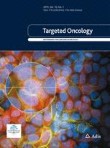
Abstract
Background
Whether tumour-infiltrating lymphocytes (TILs) play different roles in different molecular subtypes of breast cancer remains unknown. Additionally, their prognostic and predictive value in different molecular subtypes of breast cancer is still controversial. The aim of our meta-analysis was to assess the prognostic and predictive value of TILs in different molecular subtypes of breast cancer by summarizing all relevant studies performing multivariate analysis.
Methods
PubMed, Embase, EBSCO, ScienceDirect, the Cochrane Database and Web of Science were comprehensively searched (until March 2020). Hazard ratios (HRs), odds ratios (ORs) and their 95% confidence intervals (CIs) were used as effect measures to perform our meta-analysis. A random effect model was used. Stata software, version 15 (2017) (StataCorp, College Station, TX, USA) was used to perform the statistical analysis.
Results
Thirty-three studies including 18,170 eligible breast cancer patients were analysed. The meta-analysis showed that high TIL expression was significantly associated with increased pathological complete response (pCR) rates after neoadjuvant chemotherapy in patients with the HER2-enriched molecular subtype (OR = 1.137, 95% CI [1.061 ~ 1.218], p < 0.001) and triple-negative breast cancer (TNBC) subtype (OR = 1.120, 95% CI [1.061 ~ 1.182], p < 0.001). However, high TIL expression was not significantly associated with high pCR rates after neoadjuvant chemotherapy in patients with the luminal molecular subtype of breast cancer (OR = 1.154, 95% CI [0.789 ~ 1.690], p = 0.460). We carried out a meta-analysis on the HRs of overall survival (OS) and disease-free survival (DFS) to assess the prognostic value of TILs in breast cancer with different molecular subtypes more deeply. Our meta-analysis con firmed that high TILs were associated with significantly improved DFS in patients with the HER2-enriched molecular subtype [HR = 0.940, 95% CI (0.903 ~ 0.979), p = 0.003] and TNBC molecular subtype [HR = 0.907, 95% CI (0.862 ~ 0.954), p < 0.001]. However, high TILs were not associated with significantly better DFS in patients with the luminal molecular subtype of breast cancer [HR = 0.998, 95% CI (0.977 ~ 1.019), p = 0.840]. Furthermore, the results confirmed that high TILs were significantly related to better OS in patients with the HER2-enriched molecular subtype [HR = 0.910, 95% CI (0.866 ~ 0.957), p < 0.001] and TNBC molecular subtype [HR = 0.869, 95% CI (0.836 ~ 0.904), p < 0.001]. Conversely, the summarized results indicated that high TILs were significantly associated with poor OS in patients with the luminal molecular subtype of breast cancer [HR = 1.077, 95% CI (1.016 ~ 1.141), p = 0.012].
Conclusions
Our meta-analysis confirms that high TILs are associated with favourable survival and predicts pCR in breast cancer patients with the TNBC and HER2-enriched molecular subtypes.




